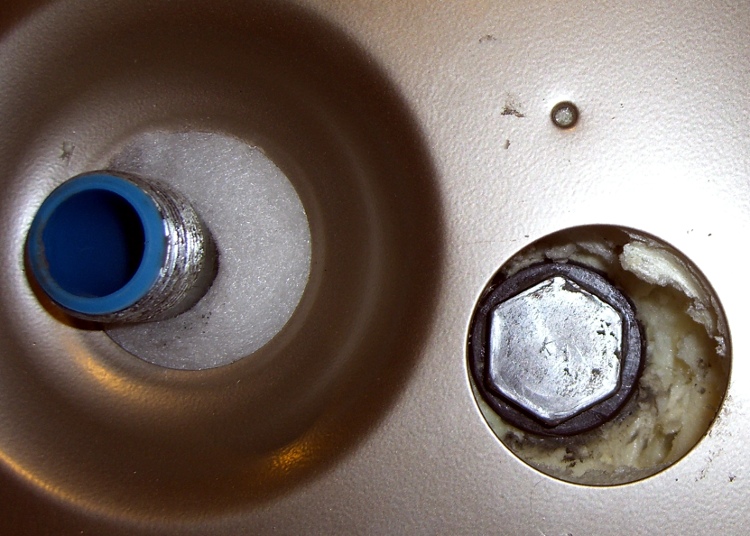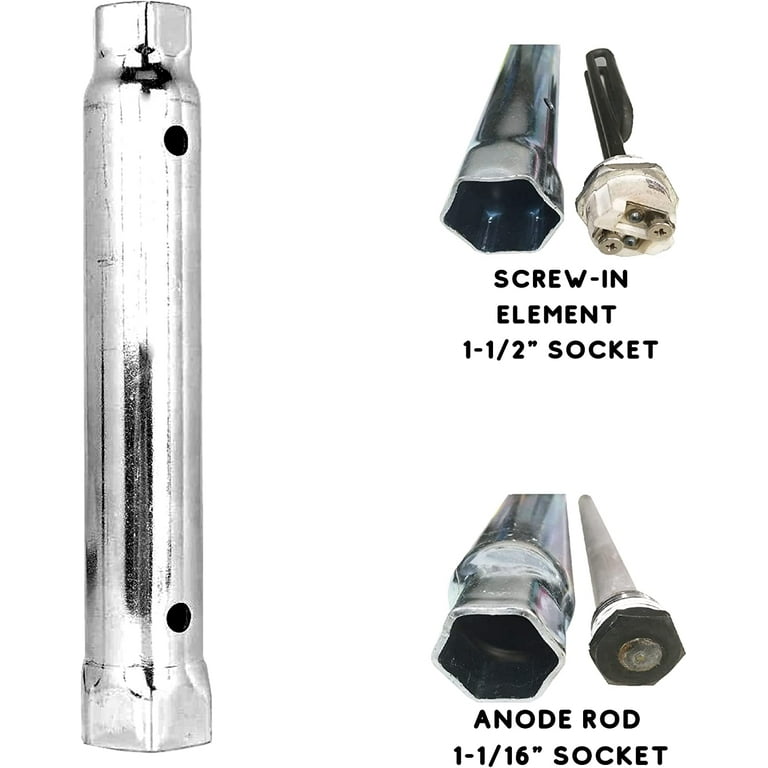The water heater anode rod socket size is typically 1 1/16 inches. This size fits most standard water heater models.
Water heater maintenance is crucial for longevity and efficiency. One essential component is the anode rod, which prevents corrosion by attracting minerals that would otherwise damage the tank. Over time, the anode rod wears out and needs replacement to ensure optimal performance.
Knowing the correct socket size, usually 1 1/16 inches, makes this task easier. Regularly checking and replacing the anode rod can extend the life of your water heater, saving you money on repairs and replacements. Maintaining this small yet vital part is a simple step towards efficient household management.
Page Contents
Introduction To Anode Rods
Anode rods protect water heaters from rust. These rods attract corrosive elements. This keeps the tank safe. They are made of materials like magnesium, aluminum, or zinc. The rod sacrifices itself to save the tank. This process is called electrolysis.
Anode rods extend the life of water heaters. Without them, tanks rust quickly. This leads to leaks and damage. Replacing the rod is cheaper than replacing the tank. Check the rod regularly for wear. Replace it every few years for the best protection.
Types Of Anode Rods
Magnesium anode rods are excellent for soft water areas. These rods corrode quickly to protect your tank. Magnesium is known for its efficient protection against rust. They may require more frequent replacement but offer superior protection.
Aluminum anode rods are suitable for hard water areas. They last longer than magnesium rods. These rods are less expensive and corrode slower. Aluminum rods are a good option for long-term protection.
Zinc anode rods contain a small amount of zinc. They help reduce sulfur smells in water. These rods are a mix of aluminum and zinc. They offer moderate protection and are effective in fighting odor issues.
Determining Socket Size
Water heater anode rods come in different sizes. The most common socket sizes are 1-1/16 inches and 1-1/8 inches. Plumbers often use these sizes. Using the right size is very important. It helps to avoid any damage to the rod or heater. Always check the manufacturer’s guide first.
To measure the socket size, use a tape measure or caliper. Place the tool across the flat sides of the rod’s hex head. Read the measurement carefully. Make sure the tool is straight for accurate reading. If uncertain, bring the rod to a hardware store. Staff can help you find the right socket size.

Credit: www.amazon.com
Tools Needed For Replacement
Socket wrenches are essential. They help to remove the anode rod. Choose the right size. A 1-1/16 inch socket is common. Ensure it fits snugly. This prevents slipping and damage.
Breaker bars provide extra leverage. They help loosen tight anode rods. Use them with your socket wrench. Apply steady pressure. This makes the job easier and safer.
Torque wrenches are crucial. They ensure the anode rod is tight enough. Over-tightening can cause damage. Set the correct torque. Follow manufacturer guidelines. This ensures proper installation.
Step-by-step Replacement Guide
Turn off the water supply to your heater. Attach a hose to the drain valve. Open the drain valve to let the water flow out. Make sure to drain it into a bucket or outside. Close the drain valve when done.
Locate the anode rod on top of the heater. Use the correct socket size to fit the rod. Turn the socket counterclockwise to loosen the rod. Carefully pull out the old anode rod.
Insert the new anode rod into the same spot. Use the socket to tighten the rod. Make sure it is secure but do not over-tighten. Turn the water supply back on. Check for any leaks around the rod.
Maintenance Tips
Inspect your water heater anode rod every three months. This helps in detecting early problems. Anode rods protect your heater from rust and corrosion. They attract minerals that cause rust. Always use the correct socket size for inspection. A 1 1/16-inch socket fits most rods.
Look for cracks or a thin rod. These are signs of wear and tear. A worn-out anode rod can cause rust in your heater. Replace the rod if it looks very thin. This will extend the life of your water heater. Checking it regularly can save you money on repairs.
Common Issues And Solutions
Stuck anode rods can be a big problem. Use a socket wrench to remove them. Sometimes, the rod is too tight. Apply penetrating oil to loosen it. Wait for 10 minutes after applying the oil. Try to remove the rod again. If it is still stuck, use a breaker bar. This tool gives extra leverage. Be careful not to damage the heater.
Corrosion can shorten the life of the water heater. The anode rod protects the heater from rust. Check the rod every six months. Replace it if it is corroded. Use a 1 1/16-inch socket to remove the old rod. Install a new one to prevent further damage. Always inspect for leaks after replacing the rod.

Credit: softsolder.com

Credit: www.walmart.com
Frequently Asked Questions
What Size Socket Does An Anode Rod Take?
An anode rod typically requires a 1-1/16 inch socket. Ensure you use a socket wrench for proper fit.
What Size Wrench For Water Heater Anode?
A 1-1/16 inch wrench is typically needed for removing or installing a water heater anode.
What Size Socket To Remove Ao Smith Anode Rod?
Use a 1-1/16 inch socket to remove an AO Smith anode rod. Ensure the socket is deep enough.
What Tools Do You Need To Replace An Anode Rod?
To replace an anode rod, you need a socket wrench, Teflon tape, a garden hose, and a new anode rod.
Conclusion
Choosing the correct anode rod socket size is crucial for water heater maintenance. It extends the lifespan of your unit. Regular inspections can prevent costly repairs. Ensure you use the proper tools to avoid damage. Follow these tips to keep your water heater in optimal condition.
Happy maintaining!
